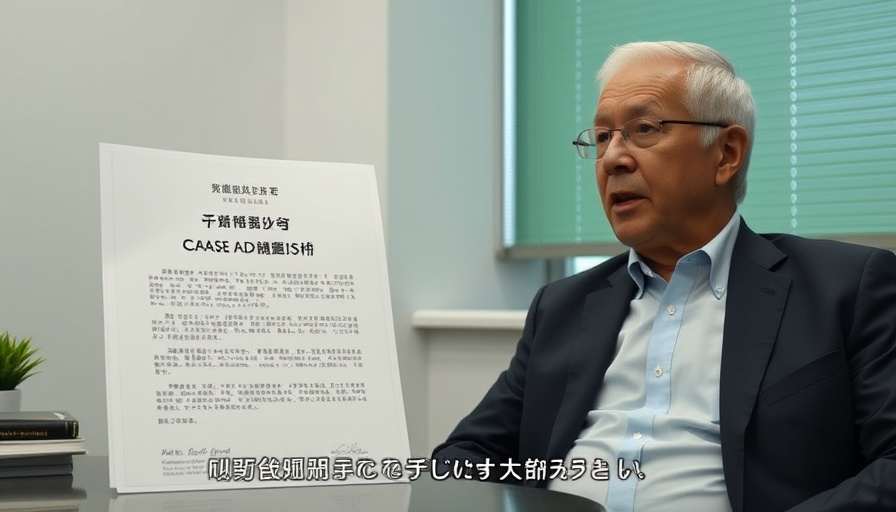
AI Reviving Iconic Animation Styles: A New Era of Creativity?
The recent rise in Ghibli-style images generated by AI has ignited both fascination and fiery debate among fans and creators alike. As the digital landscape continues to evolve, the ability for AI to replicate styles of beloved art forms—once thought to be uniquely human—presents a mix of excitement and concern. However, it also challenges traditional views on creativity and ownership in artistic expression.
Falling into Controversy: The Ghibli-Style AI Debate
As OpenAI's CEO Sam Altman showcased his ‘Ghibli-fied’ appearance, it drew both admiration and scorn. Studio Ghibli fans argue that AI’s rapid re-creation of their treasured art undermines the dedication and painstaking effort put into traditional animation. For instance, the assembly of frames in Ghibli’s “The Wind Rises” highlights the extreme lengths artists go through, spending over a year crafting just a few seconds of animation. In stark contrast, AI utilizes algorithms to output similar artistry in mere moments.
The Role of the Community in Protecting Artistic Integrity
The emergence of the now-viral fake ‘cease and desist’ letter adds another layer to this ongoing debate. Initially, social media user @tj_littlejohn claimed to have received a warning from Ghibli regarding a photo-sharing application that creates Ghibli-style images. His proclamation ignited a rallying cry among AI advocates, emphasizing the need for protections for AI creators rather than punitive actions against them. This incident underscores the sentiment that the imaginative realm should be open for exploration, especially in an era of rapid technological advancements.
Understanding Copyright in the Age of AI
This controversy raises essential questions about copyright and ownership. What happens when technology blurs the lines between inspiration and replication? As AI continues drawing from existing artworks, the debate over intellectual property intensifies. This discourse extends beyond the Ghibli phenomenon, resonating within broader conversations about AI intersectionality across various artistic fields.
AI and Traditional Art: A Future Co-existence?
The heart of the disagreement lies in whether AI can coexist with traditional art forms or if it poses a threat to them. Proponents of AI-generated art argue that it democratizes creativity, enabling individuals without formal training to explore their artistic abilities. Conversely, detractors fear that such technology could devalue the painstaking artistry honed over years. The challenge emerges: How to ensure that traditional artists receive the respect and recognition they deserve in this evolving landscape.
The Path Forward for AI Art Models
As we venture into this new frontier, a collaborative solution appears paramount. Artists can find ways to embrace emerging technologies while retaining their unique voice. Furthermore, establishing clear guidelines on copyright protections for both AI-generated works and original pieces may help bridge the gap between traditional artistry and AI technologies, ultimately fostering a creative environment where both can thrive.
As AI continues to revolutionize the artistic landscape, staying informed on such trends is crucial. Join the conversation and see how you can engage with these exciting developments in the world of technology!
 Add Row
Add Row  Add
Add 




 Add Row
Add Row  Add
Add 

Write A Comment